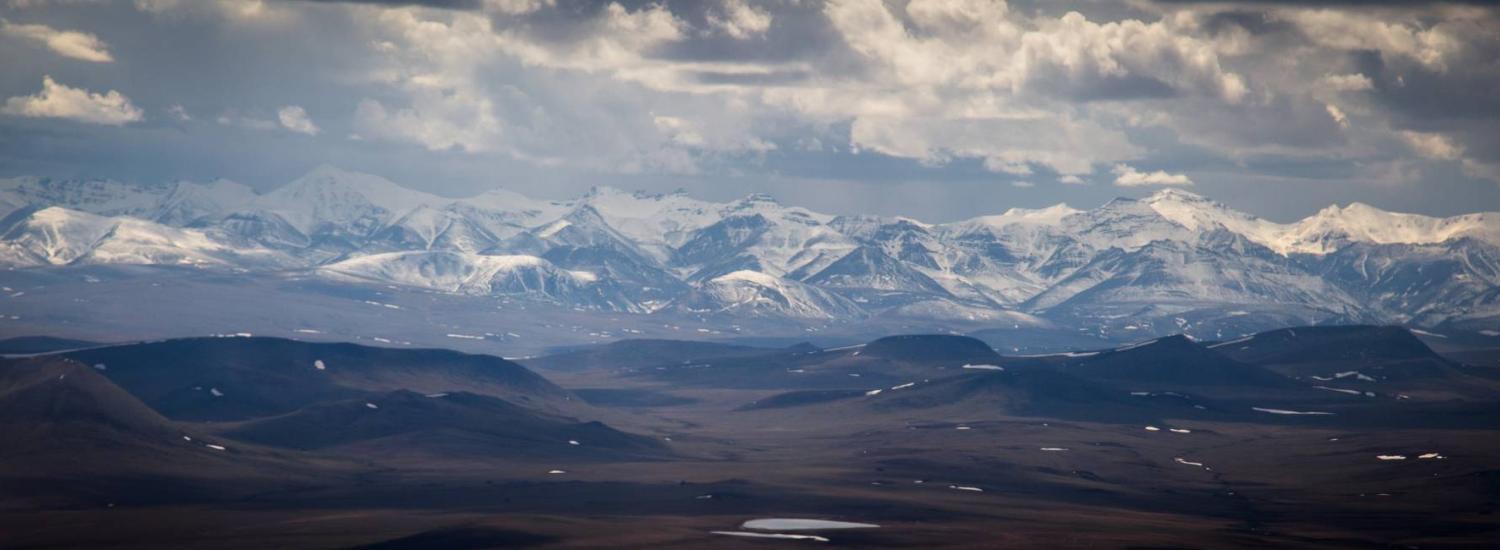Local Air Pollution on Alaska's North Slope Changes Cloud Properties
Emissions from oil and gas activities might influence local climate

Local air pollution on Alaska's North Slope appears to affect liquid clouds that form downwind, leading to smaller droplets less likely to fall as drizzle or rain, according to new research. Clouds in the region can either cool or warm the surface, depending on their specific properties and season. In the summertime, Arctic clouds generally cool the surface by reflecting sunlight, but changing droplet size may alter the degree of that cooling.
Because the Arctic is warming more rapidly than the rest of the planet, better understanding those clouds—and the pollution that affects them—is crucial to understanding future global climate change.
In this study, CIRES and NOAA scientists and collaborators compared liquid-containing clouds in two coastal regions in Alaska: Oliktok Point, which is close to the Prudhoe Bay oilfield, and the more atmospherically pristine Utqiaġvik (formerly called Barrow).
“It’s almost like a laboratory experiment: the two locations are very close geographically and their weather is similar, but they are very different in terms of emissions,” said Maximilian Maahn, the paper’s lead author and a postdoctoral research associate at the Cooperative Institute for Research in Environmental Sciences (CIRES) at the University of Colorado Boulder working in the NOAA Earth System Research Laboratories. “By comparing cloud observations from both sites, we can investigate how Arctic cloud properties and processes are modified by emissions from the Prudhoe Bay Oil Field.”
The Department of Energy’s Atmospheric Radiation Measurement (ARM) mobile facility site at Oliktok Point. Photo: U.S. Department of Energy ARM Facility.
The paper is published today in the journal Atmospheric Chemistry and Physics. In this study, the research team used aircraft observations and a pollution dispersion model to link differences in pollution from oil and gas activities to changes in cloud properties.
The data for this study came from the Department of Energy (DOE) Atmospheric Radiation Measurement Program’s Airborne Carbon Measurements 2015 field campaign, which included nearly 40 research flights from June to September. Even though the project’s main mission targeted trace gas emissions from the tundra, the aircraft also included an instrument that measured clouds and aerosols at Oliktok Point and Utqiaġvik.
The researchers compared the atmospheric composition of Oliktok Point, with all its oilfields, and Utqiaġvik. They found more pollution at Oliktok Point—more than twice as many condensation nuclei (the types of tiny airborne particles on which water vapor condenses to form droplets).
They also found that liquid clouds observed at Oliktok Point contained significantly smaller cloud droplets than at Utqiaġvik, conditions which result in less drizzle and rain formation in the polluted region. This reduced the rain rate there to about one-tenth and might have an impact on the lifetime of the clouds. The properties of the pollution particles observed near the clouds match those from oil production facilities, which makes a connection between the local emissions and the reduced cloud droplet size likely.
Liquid cloud effective radius, which describes the size of cloud drops, compared to liquid water content, which describes the mass of liquid drops per unit volume, color-coded according to the relative number of observations. Observations at Utqiaġvik/Barrow comprise a wider range of cloud drop sizes (3 to 27 um) than at Oliktok Point (mostly below 16 um, see dashed line), showing smaller cloud droplet sizes in the Prudhoe Bay region.
To further explore this connection, the researchers then used a NOAA-developed pollution dispersion model called HYSPLIT. The model tracks how emissions spread, incorporating weather conditions. Maahn and his colleagues found that, indeed, pollution from industrial activities in the Prudhoe Bay region could explain differences in the properties of liquid clouds.
“But even with pollution from Oliktok Point’s oil activities, the air is still relatively clean,” Maahn said. That suggests that clouds on Alaska’s North Slope are relatively sensitive, and small amounts of pollution have a demonstrable effect.
Now, the researchers want to quantify each step in the process, including the last one: Whether clouds downwind of pollution sources are likely to make the surface warmer or cooler. “Aircraft data are more like a snapshot: we did random samples of clouds and demonstrated this effect, but we can’t say how representative our results are,” said Maahn. “Measurements on the ground can provide continuous, long-term observations that could tell us whether there’s an impact on radiation and cloud lifetime. We want to know the percentage of clouds affected by pollution in this region of the Arctic.”